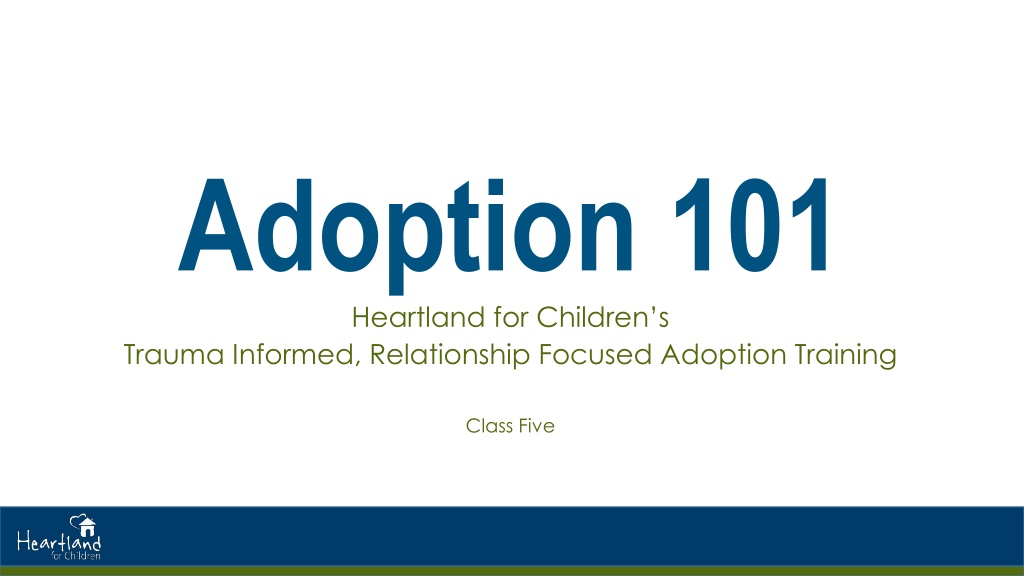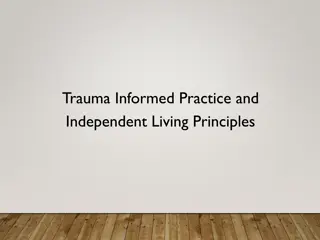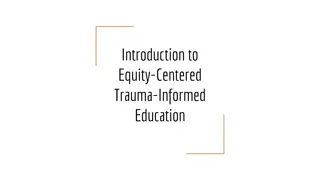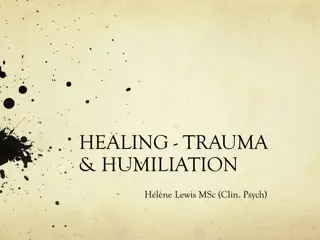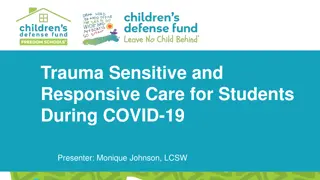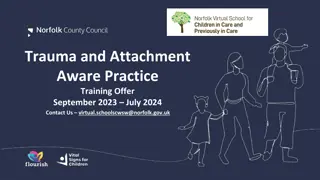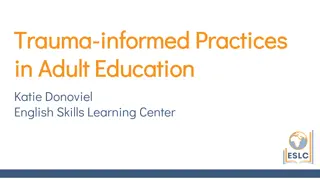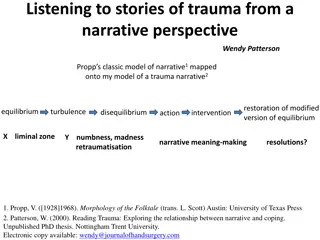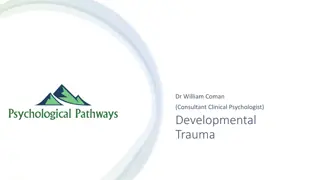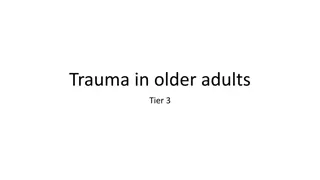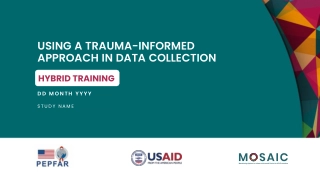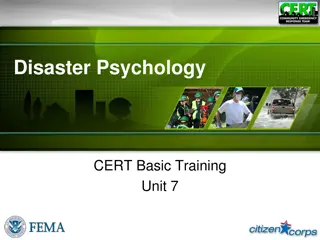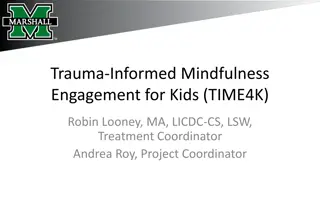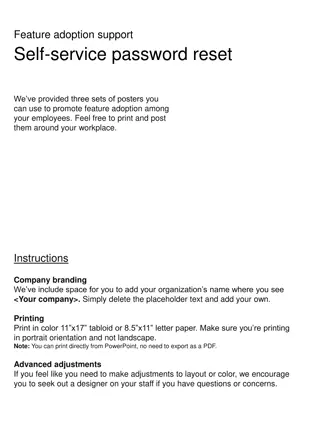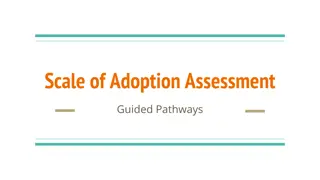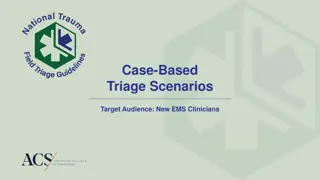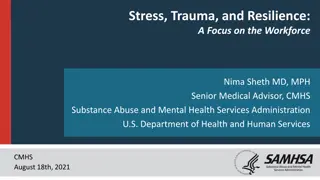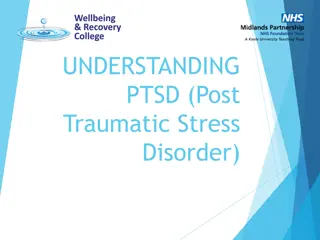Trauma-Informed Adoption Training Class: Empowering Principles for Healing
Adoption 101 class by Heartland for Children focuses on trauma-informed, relationship-focused adoption training. This class delves into the pillars of healing, safety, connection building, and coping skills, paralleling trust-based relational intervention principles. Empowerment principles emphasize meeting a child's needs for attachment and felt safety, with a focus on physiological strategies like hydration, nutrition, healthy touch, and physical activity to support cognitive and emotional well-being.
Download Presentation

Please find below an Image/Link to download the presentation.
The content on the website is provided AS IS for your information and personal use only. It may not be sold, licensed, or shared on other websites without obtaining consent from the author. Download presentation by click this link. If you encounter any issues during the download, it is possible that the publisher has removed the file from their server.
E N D
Presentation Transcript
Adoption 101 Heartland for Children s Trauma Informed, Relationship Focused Adoption Training Class Five
Welcome To Adoption 101, Class Five! Welcome back! Discussion of last week & homework Today s Agenda! Guest Speaker Pillars of Complex Developmental Trauma Empowerment Principles
Three Main Pillars for Healing Safety The child IS safe and FEELS safe Connection/Relationship Building Coping Skills
Principles of Trust-Based Relational Intervention The 3 Pillars parallel the 3 evidence based principles of Trust- Based Relational Intervention (TBRI): Empowering Connection Correction We will discuss elements of each principle, starting with empowerment.
What are empowering principles? Empowering is connecting by meeting a child s needs.
Meeting Needs is Critical for Attachment & Felt Safety Attachment Cycle Child has a need > Child Expresses Need > Need Met by Caregiver Trust, Attachment, Felt Safety Let s not forget what our children s attachment cycle has historically looked like & their attachment style! All of the TBRI Principles aim to meet a child s needs. Empowerment principles looks at meeting the child s physical needs, both ecologically and physiologically.
Physiological Strategies of Meeting Needs Hydration Improves memory, attention, cognition and behaviors. Should be drinking every 2 hours! Nutrition Proper nutrition can improve cognitive & emotional functioning Whole grains, turkey, fish, nuts, lentils, & Omega-3 fatty acids provide the building blocks for healthy brain chemistry Children with histories of substance exposure and early childhood trauma often have significant changes to insulin receptor sites, making them subject to dramatic shifts in behavior when their blood sugar begins to drop below optimal levels. Need regular, nutritious snacks every 2 hours! Focus on protein and complex carbohydrates Healthy Touch Touch is our first sense to develop and our skin is our largest organ! Touch can actually change brain chemistry and is critical to healthy development Remember that some children are fearful of touch - find way to engage in a way that feels safe for the child Physical Activity Physical Activity can regulate brain chemistry by brining down excitatory and stress neurochemicals in the brain and boosting calming neurochemicals. If they receive the appropriate levels of physical activity, a child s learning and memory are enhanced. If they overdo it, they can have a meltdown. Every 2 hours they should be involved in a physical activity! Sleep
Physiological Needs Continued Sensory Processing 1 out of 20 children have sensory processing difficulties, with a higher than average rate for children who have experienced trauma. It is often undetected, overlooked, or diagnosed as something else. Sensory Processing Disorder can be defined as a practical inability to use information received through the senses so as to function smoothly and normally in everyday life. This can lead to difficulties with eating, getting dressed, riding in a car, playing with others, etc. Helpful to pay attention to input they are seeking and what they are avoiding. Journaling is sometimes helpful.
Physiological Strategies: Understanding Sensory Processing Five external senses: sight, smell, touch, taste, and sound The senses serve four primary functions: ALERT the body and brain to important cues PROTECT the body and brain from becoming overwhelmed SELECT what is important to pay attention to ORGANIZE the brain automatically Three internal or body-centered senses help the brain create meaning from sensory input received from the environment Vestibular Proprioceptive Tactile
How can we meet our childrens sensory needs? Weight lifting (proprioceptive, calming, organizing) Basketball (vestibular, hand-eye coordination) Swimming (proprioceptive, tactile) Trampoline (vestibular) Climbing (proprioceptive, vestibular, hand-eye coordination) Tight clothing (proprioceptive) Massage (proprioceptive, tactile)
Empowering Principles, Ecological Strategies Supporting our children in their environment, and ensuring they are seen, heard, and valued! Felt Safety To have felt safety, must feel connected, that they belong, and are being their true self Transitions Daily Transitions Life Transitions Prepare them for success! Scaffolding Self-Regulation Help your child learn to self-regulate
More Empowering Strategies Daily Routine Consistent, predictable, and prepares for what is coming next Rituals Routine that builds connection! Artifacts Object with meaning, sentimental
Reflection: What elements of Mr. White video relates to what we talked about today? What are some key words for you that has stuck in your mind related to the empowering principles? After learning this information, where there any ah ha moments? After learning this information, is there anything you may start doing differently in your everyday life? QUESTIONS?
Thank you! Homework: Empowering Strategies Handouts: The Healing Power of Giving Voice Dan Hughes 24 S s: A Guide for Raising your Troubled or Sensitive Child 10 Tips for Stressed Out Parents Your 8 Senses Sensory Profiles Weighted Items: Tools for Helping Children Learn to Regulate
